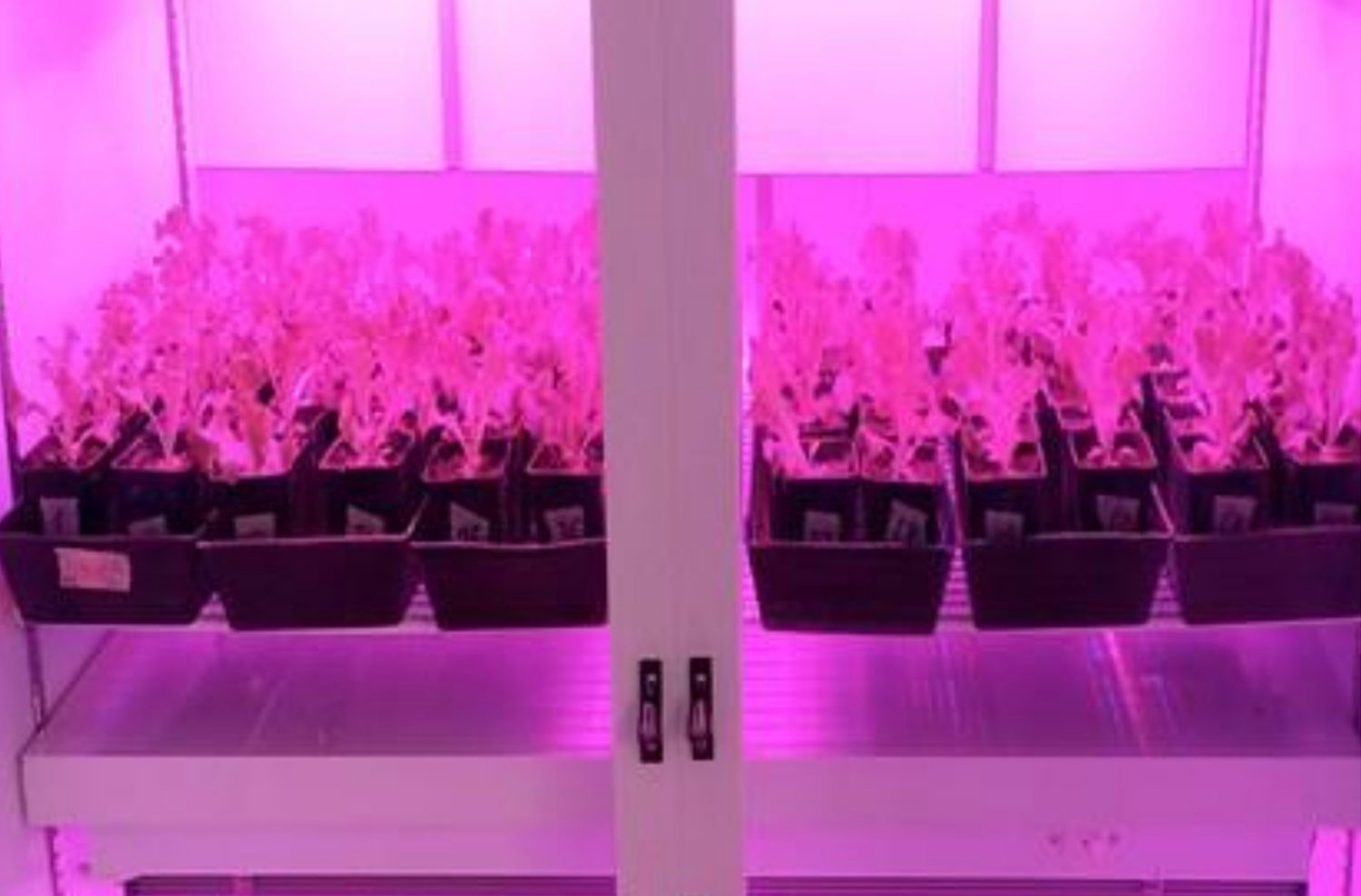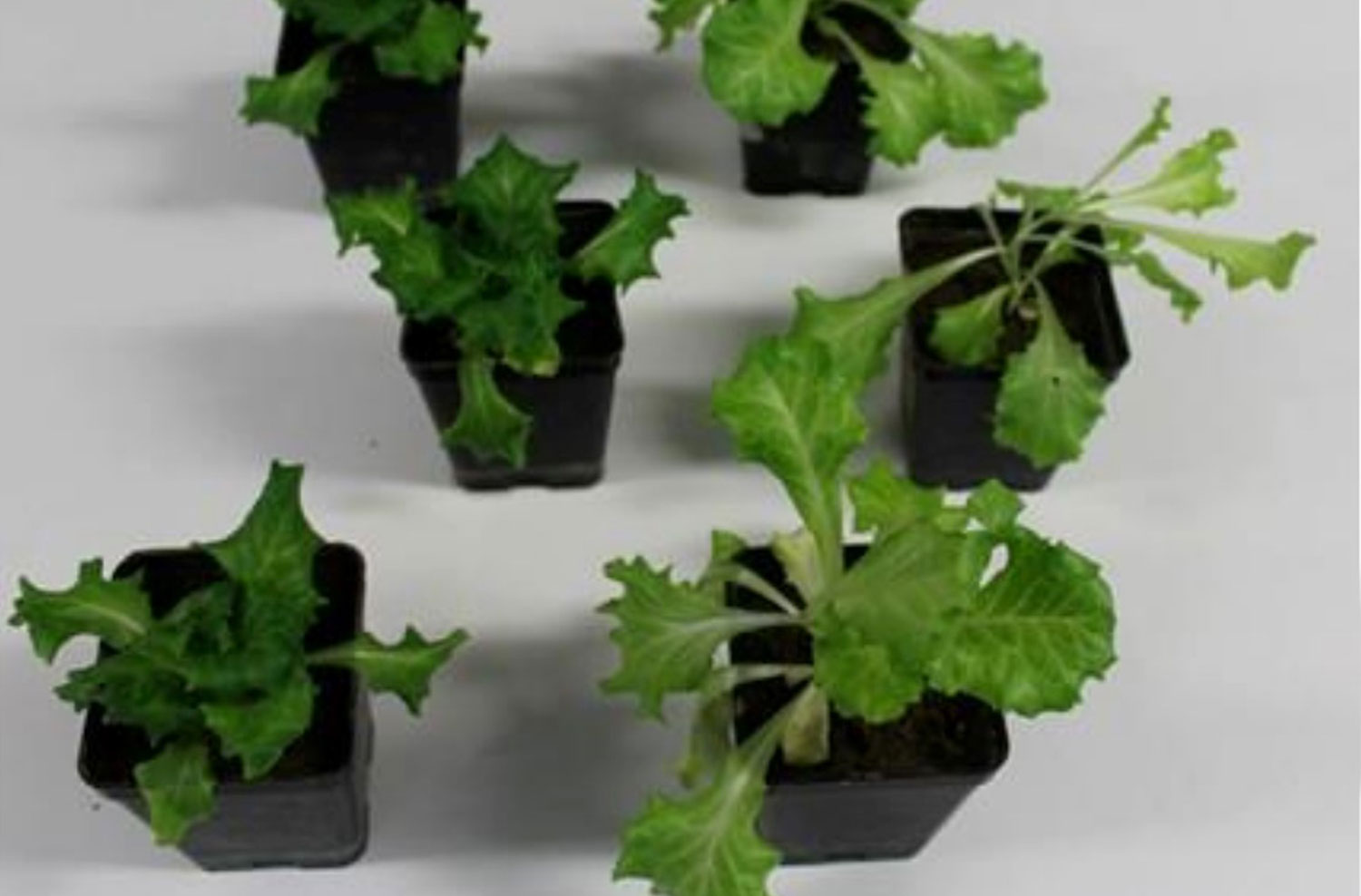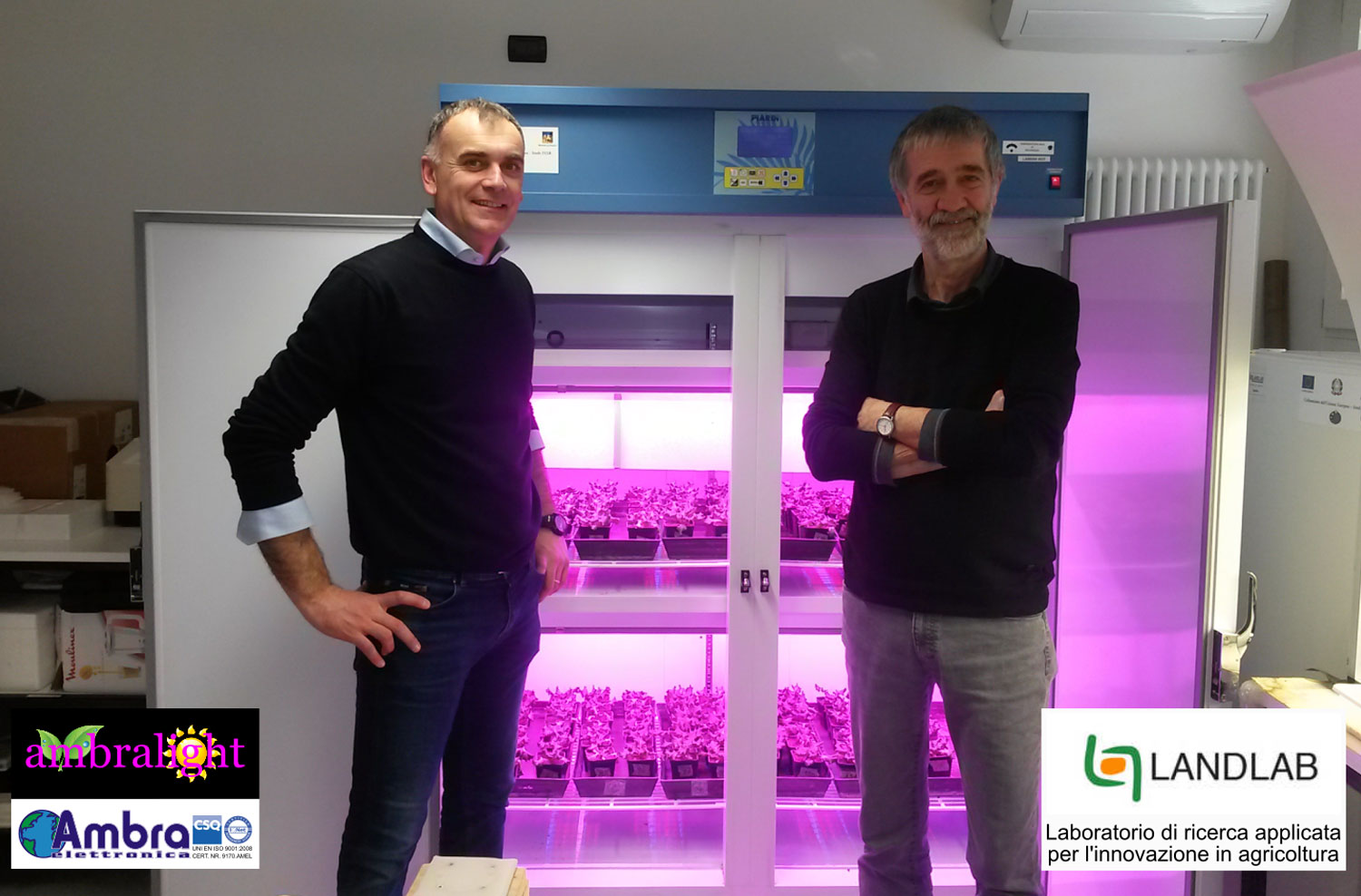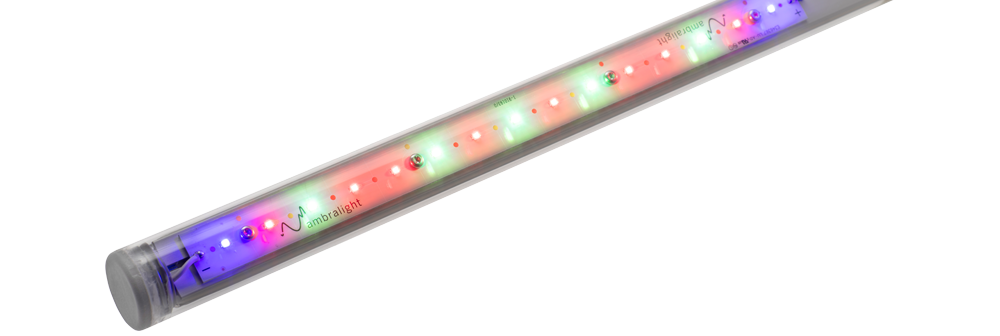LandLab, a private laboratory near Vicenza, is dedicated to researching innovative agricultural solutions. To optimize the performance of their phytotron (a controlled growth chamber), they approached us to convert their neon lighting to LED lights specifically designed for plant growth.
Thanks to our AE32 LED solutions, LandLab significantly improved crop quality and yield, demonstrating how LED lighting can revolutionize advanced agricultural research.
The project
LandLab’s phytotron is a controlled environment where light, temperature, and humidity are regulated to provide uniform conditions for all plants inside. The primary challenge was to replace the neon lighting with LED lamps capable of delivering a specific photon level and uniform light distribution across all cultivable surfaces, without disrupting the stable conditions of the phytotron. This upgrade was critical to improving crop performance and optimizing research outcomes.
Installation description
For this project, we installed our AE32 LED lamps, configured to meet LandLab’s specific needs:
- 2 1200 mm bars and 2 300 mm bars for each shelf in the phytotron.
- 90W power consumption, ensuring optimal energy efficiency.
The AE32 lamps are designed to emit light within the photosynthetically active spectrum, ensuring uniform distribution across all cultivable surfaces. This significantly enhanced the plants’ growing conditions, making the phytotron an even more effective tool for research.
Installed product
Benefits achieved
The results obtained after 10 days of using our AE32 LED lamps were significant:
- 38% increase in biomass: plants grown under LED lights recorded an average weight of 4.39 g, compared to 3.18 g with neon lighting.
- Nearly doubled chlorophyll levels: chlorophyll concentration in the leaves increased from 22.58 to 40.6, reflecting the plants’ greater vitality.
- Stronger and more uniform plants: crops grown under LED lights were sturdier, less spindly, and exhibited more consistent growth.
- Improved aesthetics: leaves displayed a deeper green, indicating healthier, higher-quality plants.
These results demonstrate the effectiveness of our LED solutions in enhancing phytotron performance and crop quality, highlighting how technological innovation can make a significant difference in advanced agricultural research.




